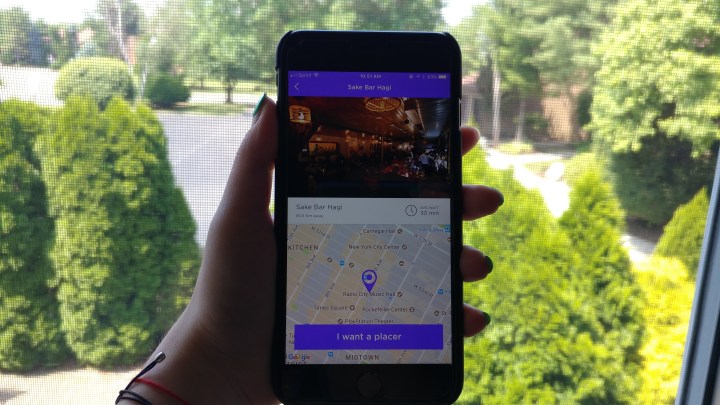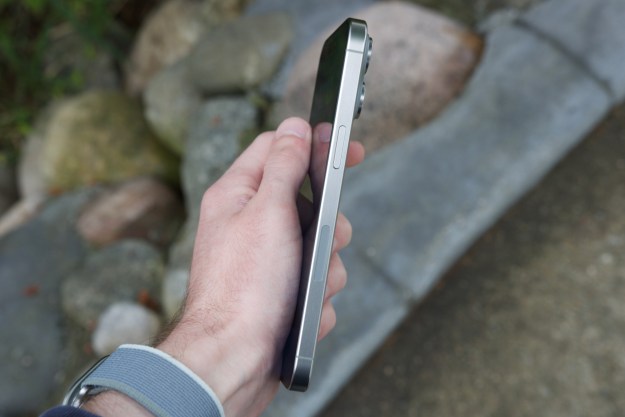
Similar to TaskRabbit, this mobile app for iOS and Android eliminates having to stand in line by connecting you with registered line-sitters known as “Placers” — people you pay to stand in line for you. The idea came from the company founders’ trip to Europe when they found themselves standing in lines for up to four hours at a time.
“This wait often led to running out of time to experience everything we wanted while on holidays. In my situation, I was constantly having to send my wife and three kids to go to other places while I waited at the attraction and then would call them to get back in time,” Dan Filmer, founder and CEO of Placer, told Digital Trends.
Launched exclusively in New York City on Thursday, June 29, the app provides you with a feed of popular places around NYC ranging from bakeries to stadiums and most recently, kiosks. Underneath each location is the average wait time and how far away you are in reference to your current location.
Once you find the place you’re looking for, you’ll tap on the image and click on the “I want a placer” icon. You’ll then have to identify how many people your Placer will be standing in line for — adults and children — and the exact time you’d like them to be in line. You can book up to 24 hours in advance if your plans are set ahead of time.
You’ll receive a notification when a Placer is available along with the amount they’re charging to stand in line. The Placers set their own rates based on weather, star rating, and overall experience with the wait time. All payments are made through the app so you don’t have to worry about having to carry cash or using a third-party payment service.
When you find your placer in line, you provide them with a “jump code” to confirm you’ve found the right line-sitter and take your place in line. You can identify them through either their profile picture on the app, wearing purple Placer merchandise, or the outfit they described through communication.
For some, the concept of this app might give you immediate anxiety thinking about the rude stares and eye rolls you might get from people standing in line behind you as you switch spots with your Placer — especially if they’re holding spots for multiple people.
Filmer expressed that as of now, there aren’t any locations that prohibit Placers and assures that it’s actually good for business. Using the platform helps to reduce frustration customers experience with long lines at particular venues and can actually help to get more people through its doors.
“My approach is to let the person in charge of the line — and those waiting in front and behind me — know that I’m a Placer and am waiting in line for someone else and explain how the app works,” Jose Leal, a line-sitter for Placer, told Digital Trends.
When we tried the app out ourselves, the interface was straightforward and simple to use. If you request a Placer for more than one venue or location, it neatly organizes them all in a section called “My Jumps.” You’ll also be able to save potential places for the future and suggest ones for Placer to add in if they aren’t available through the app.
We scrolled through the feed to see all of the places available and came across ones that were known for their long wait time — Shake Shack, DŌ Cookie Dough Confections, and Trader Joe’s. Weirdly enough, restaurants way out of our range like the West Coast’s In-N-Out Burger showed up as well.
Searching for places was also a bit difficult because none of the places we typed in showed up automatically. It would show a number of different ones first and we didn’t find the specific restaurant we were looking for until we scrolled further down into the results.
We went with Shake Shack — whose burgers and fries hypnotize people into standing in lines that wrap around the block — and tapped on “I want a placer.” Unfortunately, we didn’t find a placer until a few hours later, only to try it again the next day and find one three within seconds. The placers had rates ranging between $20-$35, which we could then either assign, or decide to wait for a cheaper deal.
Filmer explained that the app’s algorithm works to find you the highest ranked placer closest to the venue or location you’re booking and if they’re not registered within that vicinity, then the platform will continue to search for the best placer. He assured the wait time for placer responses will decrease seeing as how they currently have 500 in NYC, with more signing up each day.
Editors' Recommendations
- The most common Skype problems and how to fix them
- Everything you need to know about the massive Apple App Store outage
- I found 16 new widgets for iOS 17 that you have to try
- Is Temu legit? Everything you need to know about the shopping app
- No, the Journal app on your iPhone isn’t spying on you








